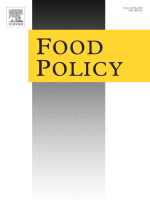Shocked into side-selling? Production shocks and organic coffee farmers’ marketing decisions
| Year | : | 2024 |
|---|---|---|
| Author/s | : | Michael Keenan, Ricardo Fort, Ricardo Vargas |
| Area/s | : | Rural development and agriculture |
Keenan, M., Fort, R., & Vargas, R. (2024). Shocked into side-selling? Production shocks and organic coffee farmers’ marketing decisions. Food Policy, 125, 102631. https://doi.org/10.1016/j.foodpol.2024.102631
Peru is the world’s leading exporter of organic coffee. Peruvian organic coffee is largely marketed through farmers’ cooperatives which have helped small farmers transition to organic production, earn price premiums over conventional coffee, and access extension services and finance. However, rising temperatures, increasingly volatile rainfall patterns, and the proliferation of pests and diseases make organic production riskier, as organic farmers cannot rely on agrochemicals to protect their farms against production shocks. If members of organic coffee cooperatives respond to production shocks by increasing their sales to private buyers (‘side-selling’), then cooperatives’ financial health could be threatened through reduced bargaining power with buyers and a decrease in scale economies. This paper explores the theoretical incentives for members to side-sell in response to production shocks and gives empirical evidence of how production shocks influence side-selling using panel data from members of two Peruvian specialty coffee cooperatives in 2013 and 2015. The study period coincides with a widespread production shock – the Coffee Leaf Rust (CLR) epidemic of 2012/13 – that decimated coffee production in Peru. We find suggestive evidence that the incidence of CLR on farms is correlated with increased side-selling. Particularly, members with high risk tolerance and high levels of non-coffee income increase side-selling when affected by production shocks. This paper contributes to a growing literature on the determinants of side-selling in agricultural cooperatives by examining the role of production shocks, extending existing theoretical frameworks, and analyzing determinants using panel data methods.







